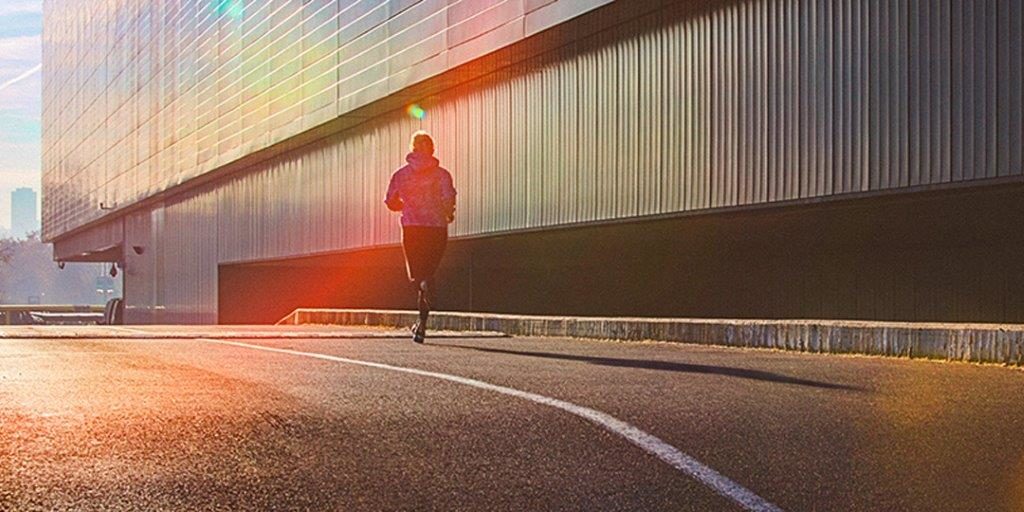
A yoga routine for your lunch break
Working in an office all day tends to be bad for your health, as that level of prolonged sitting has been linked to obesity, heart disease and a range of other conditions. While many of us would like to get out of work and head to the gym, this is rarely possible. However, if you have half an hour and a free room, you can fit this yoga routine into your day.
For each pose, hold it for ten slow, deep breaths in and out through your nose. You can run through the whole routine as many times as you like, but feel free to play around with different combinations of poses. You might want to run through the first three poses a few times before moving on, for example.
1. Mountain
First of all, stand up straight with your feet almost together; only your big toes should be touching. Let your arms hang by your sides, and turn your palms to face forward. This might seem like just standing still, but it’s an important starting pose in yoga and will help you with your posture and breathing.
The key is to imagine a straight line running from the top of your head to the floor between your feet. Aim for your body to follow that line as closely as possible, standing tall and strong. Pinch your shoulder blades together slightly to push your chest out, and really feel each breath.
2. Upward salute
From mountain pose, turn your arms so your palms are facing outwards and your thumbs are pointing behind you. Slowly raise them out by your sides, then above your head, rotating your hands as you do so that your palms touch at the end of the motion.
Stay in this pose, breathing steadily, for a few breaths. Then slowly reach upwards with your arms, keeping your feet firmly on the floor. Aim to reach with your pinky fingers, so your thumbs slightly rotate towards the top of your head, and feel the stretch all the way through your body.
3. Standing forward fold
Now, bring your arms down in front of you and bend at the waist, as if you were touching your toes. This can be difficult, as it’s an area in which many people have little flexibility. Aim to put your hands on the floor in front of you at first, without bending your knees, then gradually move them closer to your feet.
However, the aim of this pose is not actually to touch your toes. To complete it, move your head as close to your knees as possible, again while keeping your legs straight. If you’re feeling really flexible, you can hold the back of your calves and pull your head even closer, but be gentle and careful with this stretch.
4. Cat pose
Now you can bend your legs in order to put your hands and knees on the floor, as if you were crawling. Your hands should be under your shoulders with your arms straight, and your knees should be underneath your hips. Keep your back straight and your face pointed at the floor – this is your neutral, ’tabletop’ pose.
From here, breathe out and arch your back, rounding your spine so it points towards the ceiling. Let your head sink towards the floor without touching your chest, and keep your arms and legs still. When you inhale, return to your tabletop pose. Keep this flowing for ten breaths.
5. Cow pose
This is the reverse of the cat pose, and if you like you can flow directly between them once you’re confident with the movements. For now, return to your neutral tabletop pose and exhale.
As you inhale, lift your head so you are looking forwards, and let your stomach sink to the floor, again keeping your arms and legs still. When you exhale, return to tabletop position. As with the cat pose, repeat this process for ten breaths.
6. Downward-facing dog
Keeping your hands on the floor, lift your knees off the ground and move your feet slightly forwards. Now straighten your legs, arms and back, bending at the waist so that your rear is lifted into the air; you should look a bit like an upturned V.
Throughout this pose, keep your head in between your shoulders and don’t let it flop towards the ground. This is great for your legs and back, but you might find you need to bend your knees slightly if you’re struggling with it.
7. Upward-facing dog
From downward-facing dog, bend your arms and gently lower yourself so your hips are around the same level as your hands. Push your chest and head upwards, and support yourself with the tops of your feet and your hands on the floor. Your knees and groin should not be touching the ground.
You can tilt your head backwards in this pose so that you are looking upwards, as long as it is comfortable for your neck. It is a good idea to get used to moving between this position and downward-facing dog a few times.
When you are finished, gently lower yourself to the floor and lie on your back, arms by your sides and palms facing upwards. Just take a moment to have a few deep breaths and finish off your routine in a relaxing manner. You should find that your back and shoulders feel much looser, and hopefully you’ll have got rid of some stress as well!




